






| Alpine Marmot (Marmota marmota (Linnaeus, 1758)) |







|
|
Scientific name: Marmota marmota (Linnaeus, 1758) Common name: Alpine Marmot French name: Marmotte des Alpes Family: Sciuridae Size: Length: 42 to 54 cm (without the tail), 4 to 8 kg. Biotope: Grassy and rocky slopes between an altitude of 800m and 3200m. They prefer sunny and open areas. Food: They mainly feed on plants ( herbs and grasses, some seeds). The Alpine Marmots can also sometimes feed on insects, worms and spiders. Longevity : The Alpine Marmot can live up to 18 years. Geographic area: Mountains of central and southern Europe (the Alps, Tatras, the Carpathians, reintroduced in the Pyrenees). |
The Alpine Marmot is the largest member of the squirrel family. This big fat rodent is a digger with long nose hairs used as sensors while walking in the burrow's darkness. The head is flat with two small round ears. The upper side of the body is dark brown with white-tipped hairs. The side of the body is yellowish brown, the underside is reddish. The tail is hairy with a black tip. They live in groups of 5 to 12 Marmots which share the same burrow. They hibernate during 6 months, living on their stored fat supplies. The Alpine Marmots always keep a look out and often stand to observe the surroundings. They emit a loud whistle in case of potential danger. Marmots are not adapted to night vision so they are only active during the day. |
| [To know more about the Alpine Marmot] [Next picture] [Top] |
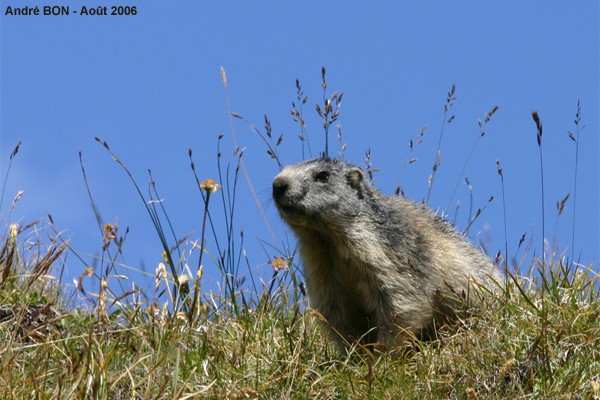
|
It's great fun to hike through the alpine meadows, observing marmots feeding to store fat for winter. |
| [To know more about the Alpine Marmot] [Next picture] [Previous picture] [Top] |
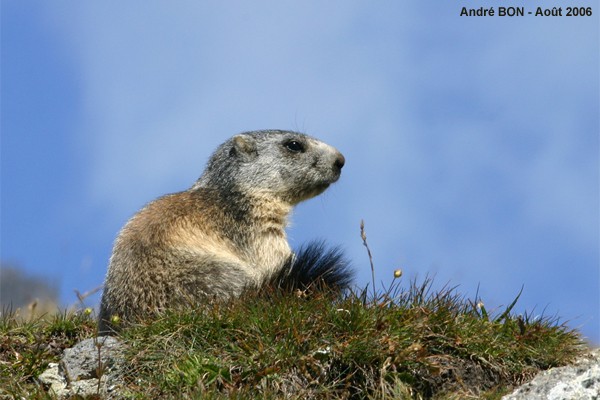
|
Marmots are always keeping a look-out for potential dangers. You can't see them in low frequented places, but you can hear their whistle alarm far away. I would have enjoyed taking a picture of a standing Marmot … I will come back! |
| [To know more about the Alpine Marmot] [Next picture] [Previous picture] [Top] |
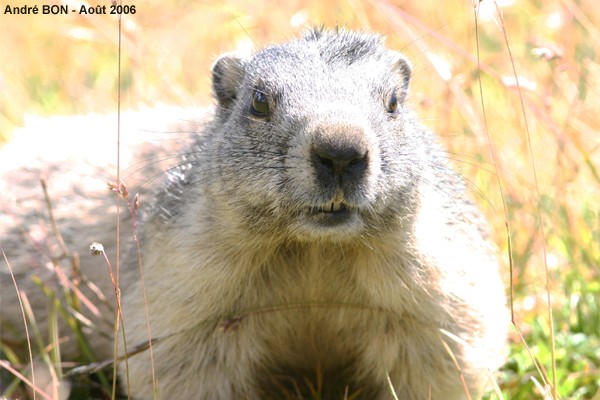
|
In the Parc de la Vanoise, close to the mountain huts, marmots are not very shy and come to meet hikers. |
| [To know more about the Alpine Marmot] [Next picture] [Previous picture] [Top] |
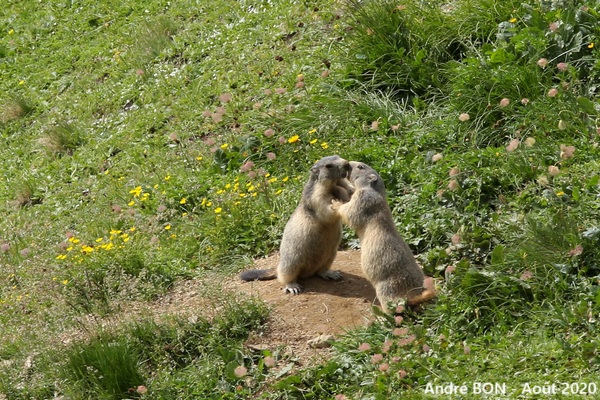
|
These two young Marmots are playing and practicing for fighting at the same time. During the young marmots' dispersal phase, integration into another family group can be violent. |
| [To know more about the Alpine Marmot] [Next picture] [Previous picture] [Top] |
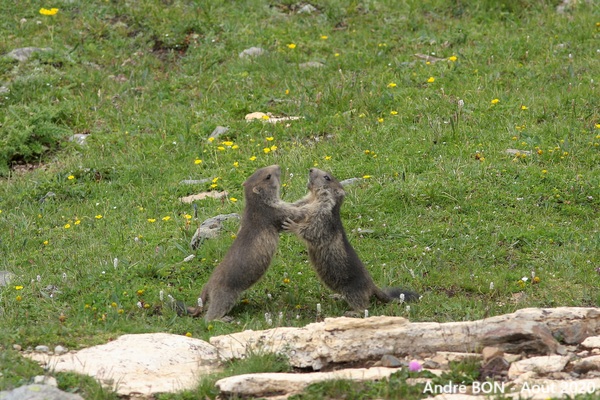
|
Who's the strongest? It's me! No, it's me! |
| [To know more about the Alpine Marmot] [Next picture] [Previous picture] [Top] |

|
A parent watches over the young nearby. It is not possible to tell if it is a male or a female. |
| [To know more about the Alpine Marmot] [Previous picture] [Top] |

|
I turn my back on the hikers but I am ready to sound the alarm at the slightest detection of danger. |